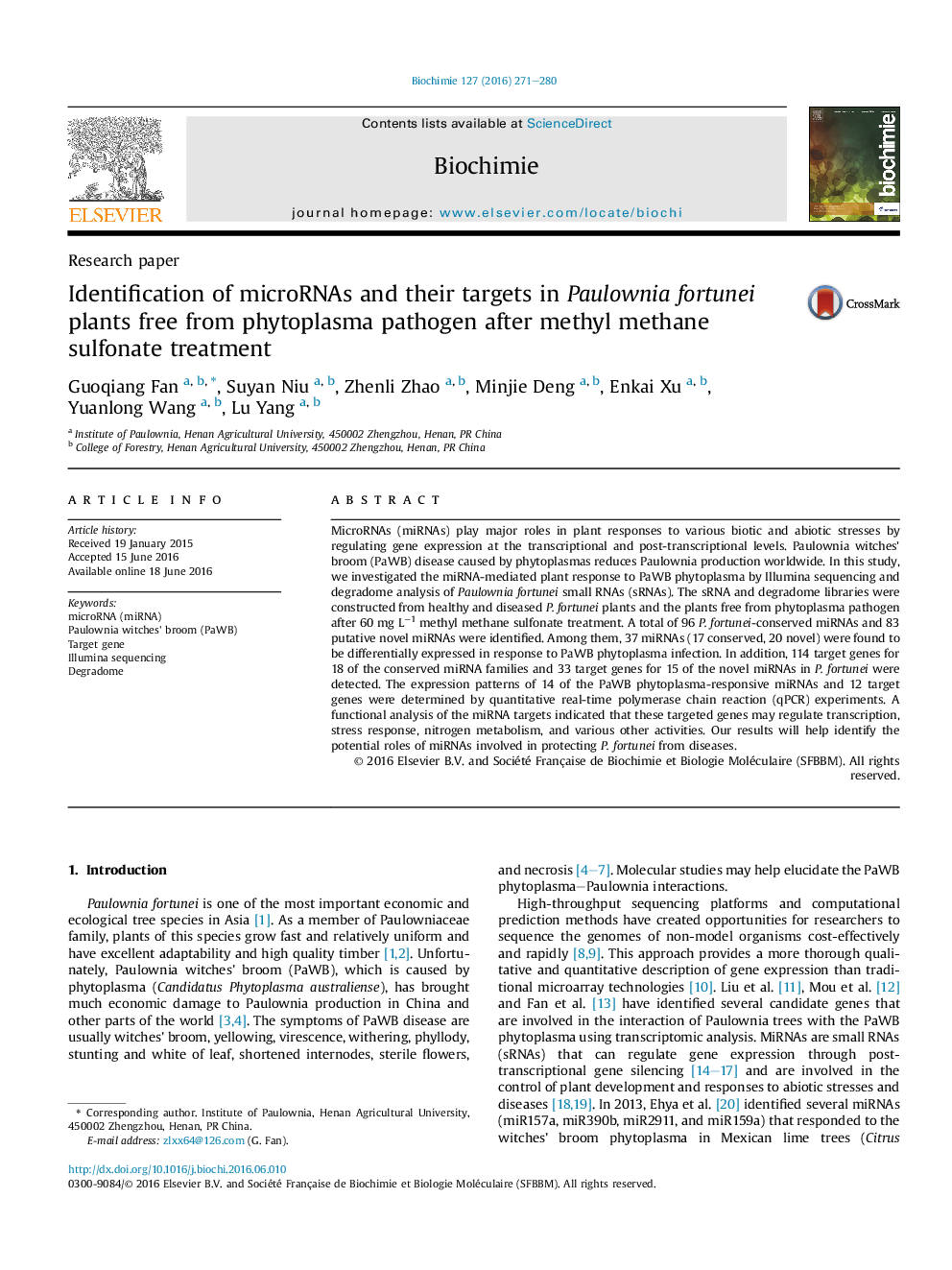| Article ID | Journal | Published Year | Pages | File Type |
|---|---|---|---|---|
| 8304334 | Biochimie | 2016 | 10 Pages |
Abstract
MicroRNAs (miRNAs) play major roles in plant responses to various biotic and abiotic stresses by regulating gene expression at the transcriptional and post-transcriptional levels. Paulownia witches' broom (PaWB) disease caused by phytoplasmas reduces Paulownia production worldwide. In this study, we investigated the miRNA-mediated plant response to PaWB phytoplasma by Illumina sequencing and degradome analysis of Paulownia fortunei small RNAs (sRNAs). The sRNA and degradome libraries were constructed from healthy and diseased P. fortunei plants and the plants free from phytoplasma pathogen after 60 mg Lâ1 methyl methane sulfonate treatment. A total of 96 P. fortunei-conserved miRNAs and 83 putative novel miRNAs were identified. Among them, 37 miRNAs (17 conserved, 20 novel) were found to be differentially expressed in response to PaWB phytoplasma infection. In addition, 114 target genes for 18 of the conserved miRNA families and 33 target genes for 15 of the novel miRNAs in P. fortunei were detected. The expression patterns of 14 of the PaWB phytoplasma-responsive miRNAs and 12 target genes were determined by quantitative real-time polymerase chain reaction (qPCR) experiments. A functional analysis of the miRNA targets indicated that these targeted genes may regulate transcription, stress response, nitrogen metabolism, and various other activities. Our results will help identify the potential roles of miRNAs involved in protecting P. fortunei from diseases.
Related Topics
Life Sciences
Biochemistry, Genetics and Molecular Biology
Biochemistry
Authors
Guoqiang Fan, Suyan Niu, Zhenli Zhao, Minjie Deng, Enkai Xu, Yuanlong Wang, Lu Yang,
